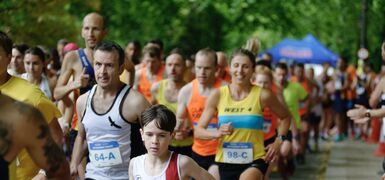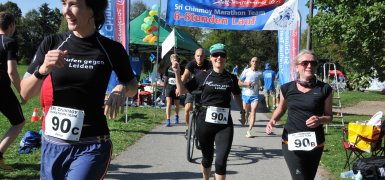18/19 September 2004 - North Face of Aiguille du Midi by the route "Frendo Spur"
Climbing up the North Face of Aiguille du Midi
The many visitors that make the pilgrimage to the famous ski resort of Chamonix, France only have to look high up in the surrounding mountains to see the North Face of Aiguille du Midi. A short trip by lift gives them a unique opportunity to see every detail of all the major climbing routes, and sometimes one can even make out on the rockface the tiny spots of the climbers in action. During last year’s Alpine trip, I beheld the north face of Aiguille du Midi, and since then whoever asked me my plans for the next season was told emphatically that I want to go on Frendo, the imposing buttress that rises up almost straight through the middle of the big wall of Midi.
The buttress is named after the Frendo-Rionda party, who did the first ascent by this route on 11 July 1941, followed twenty-three years later by the first winter ascent by the Stagni-Wohlschlag party on 21-22 January 1964. Our climb began on the seventeenth of September, 2004, when myself and my climbing partner, Ekalabhya, took what we needed for this climb up on to the glacier where we wanted to camp in order to have an early start the next morning.
- The route
I had spent all year reading as many descriptions as I could find about the route, looking at some pictures, dreaming about it constantly - I thought that I knew everything there was to know. Maybe I did, but no amount of reading could have prepared me for that moment during our approach to the glacier when the true size of the task ahead dawned on me. 1200 meters of near-vertical rock face awaited us, starting up around 2600m and ending at the 3842 meters high summit. It was such an intimidating sight, and many times during our approach we had to avert our eyes as the the whole thing just became too mind-boggling. Everything that I thought I knew had just gone out the window. It was only when we set up our “base camp” and became occupied with the mundane jobs such as melting water that our anxiety went away and we could look at the route objectively, discussing matters such as where we could go faster and where we might have problems.
We didn’t start particularly early the next morning and it wasnt untill 8:00am that we arrived under the rock itself, after a one-hour approach from our tent. The bergschrund (crevasse between the face and the glacier) was quite big and there was only one place were we could easily go on the rock. Up until now we had been quite calm and collected, but now we could see the true size of the rock features now that we were up close, and I was overwhelmed by the magnitude of it all. The north faces of the Alps are very cold during the whole day. At the beginning every touch on the rock was very uncomfortable but we were concentrating only on the climbing itself and after some time we forgot about the cold.
We were climbing without any rest stops, trying to make our first bivouac place as high as possible, bearing in mind the last lift down from the mountain the next day left at 5:00pm. We didn’t have any problems finding our way on the rock - there was only one real route up, along the ridge, on either side of which there were only abysses and hold less slabs. From time to time we would find some leftovers from other climbing parties: cams, nuts, slings, a few pitons…
The only problem was to get higher. But, not having acclimatized at all, we were moving increasingly more slowly the higher we ascended. Just before it got dark, we came under a vertical pillar that was raising four or five rope lengths up. We decided to sleep there,as we were unsure as to whether there was any better place to sleep further on. The sleep wasn't brilliant, to say the least. It got to the point when we would wake up because of the cold, wriggle around to warm up enough to go back to sleep, only to wake up again, and again...
The next morning, the buttress rising up right in front of us did not seem half as scary as it was when we approached it from the glacier the day before. We knew where we should go, so we went. From that moment on the technical difficulty level of the climb was raised a notch or two and there was one or two times I really regretted not bringing my climbing shoes with me instead of the big plastic boots that I had. But once we started to encounter the parts with snow, I was more glad I brought my boots. We had been climbing for what seemed like ages and yet we still couldn’t see the start of the section where the rockface become covered completely in snow and ice. We changed the lead for what seemed like countless times. Finally we came to the snow arête where we could put on our crampons. From there we could see the station at the summit and we were confident that we would make it there before five o’clock. But it did not happen that way...
In all the descriptions that I read, there was almost nothing written about the first two thirds of the route; it was this ice-arête that took all their attention, and when they were writing about the ice-arête you got the impression they were really inspired. And I couldsee why. The arête was so steep on both sides that we were basically crawling on it a few steps at time. The only way that we could belay ourselves was that if one of us were to fall the other one was supposed to jump down the other side of the arête! On the both sides abysses led down to the rocks and from there to the glacier 900 meters below. Understandably, we were very cautious.
- Igor starting the lead on the ice
At one point we started traversing to the right because we wanted to go around the rognon- the rock that stretched all the way to the top. There we climbed on ice belaying with ice-screws. It was dark and the ice slope grew steeper as we went up. At one point when it was my turn to belay Ekalabhya to come to me, the slope was so steep I couldn’t stand normally and I had to hang on the ice-screws. We were joking that it was good that it was dark we would probably be not so relaxed if we could see where we were.
As it was, we were only climbing and climbing, undisturbed by the height, the steepness, what lay to the right or left of us; only the cold disturbed us. I would climb to my stance and shiver uncontrollably whilst I was waiting for Ekalabhya to come to me and continue climbing another rope-length. When I saw my gloves frozen solid, I just had to laugh at the situation we were in.
I asked Ekalabhya about the time and he said that it was exactly midnight. From then on, we continued climbing in silence. We just wanted to reach the end. We reached an area laden with crevasses. I was supposed to lead that part; I pointed the light of my headlamp in all directions but I couldn’t see any logical way to go. In the end, I just picked a direction and went because I didn’t want to stay in one place too long. I was climbing through very nice forms of ice with some crevasses to one side. When I reached my stance it was such a position that I thought that there is no way back and that we had to push straight. I couldn’t really see what was up there in the dark but I could see the lights at the summit. When Ekalabhya came and continued I could see from his light that we were very close to the top alright but his movements also showed me how bad the terrain was. When my turn came to start up I could see that I was right. The last two rope-lengths were full of hidden crevasses but Ekalabhya did a great job leading the way through and over them.
At last, we reached the summit ridge and I could recognize the terrain. The track for the “White Valley” was going down on the other side and we were only a few minutes walk away to the tunnels of the Midi station.
It was 3:00am when we arrived there. We had been climbing for 30 hours, 18 hours during the second day alone. After five hours we were on the glacier again, collecting our leftover gear and the tent, and happily looking back on route above us; this time our original apprehension had been replaced with a sense of satisfaction at a job well done.
The climb was dedicated with gratitude to Sri Chinmoy.



